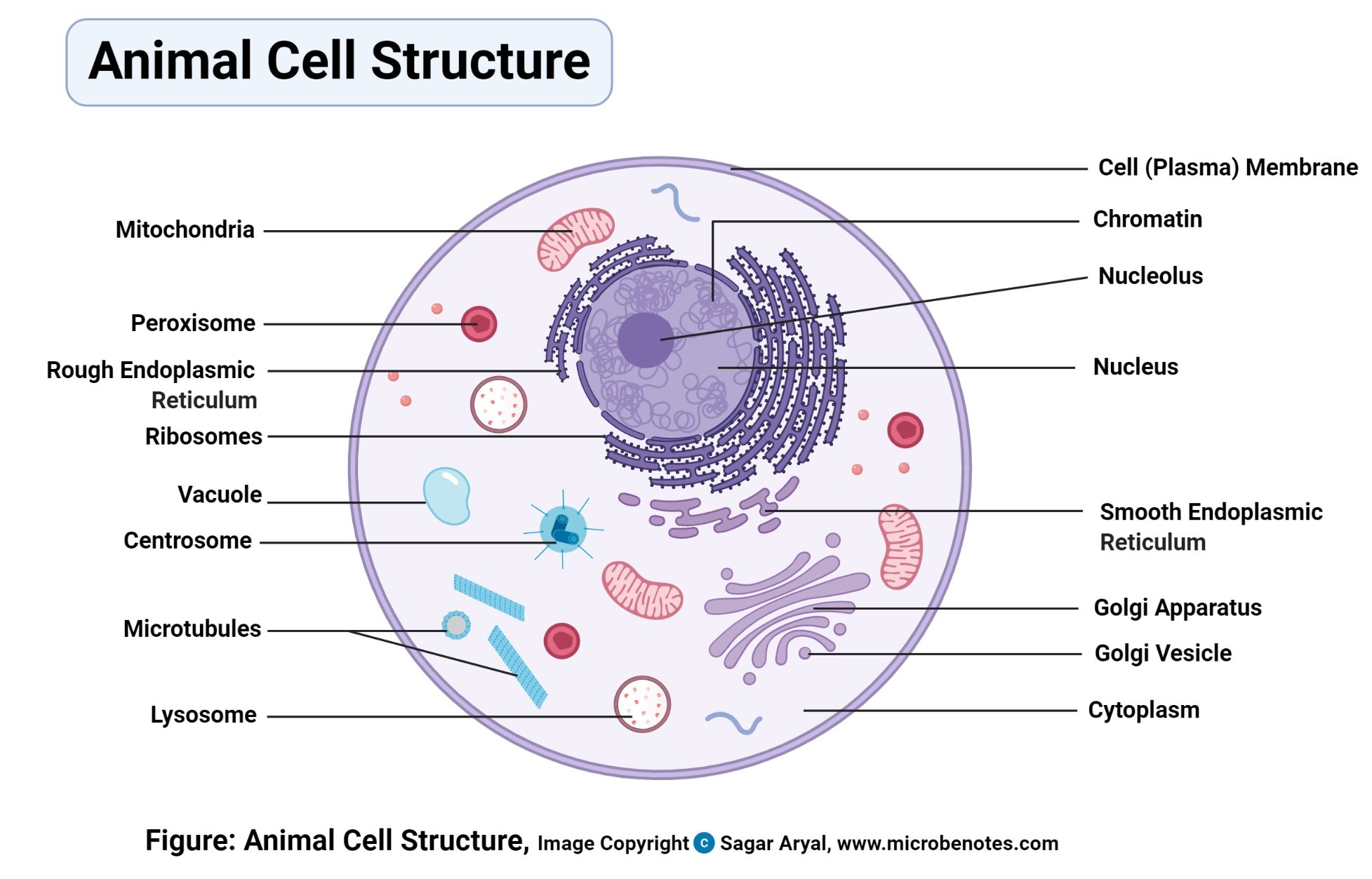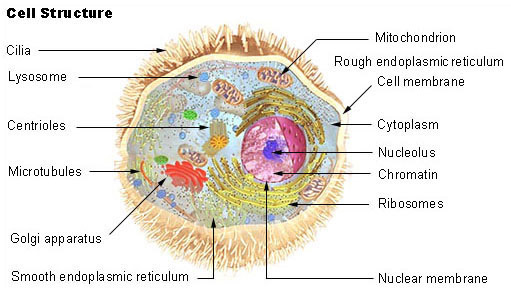Describe the Basic Structure of a Cell
Cell membrane cellular organelles cytoplasm and nucleus. The cell membrane is only one component of a cell.

Cell Definition Types Functions Diagram Division Theory Facts Britannica
All cells have an outer membrane called a plasma membrane also called a cell membrane.

. Eukaryotes are sophisticated cells with a well defined nucleus and cell organelles. It also keeps unwelcome particles from enter ing the cell. Describe the basic structure of a plant cell wall.
Describe the structure and function of sensory neurons. First week only 499. It is a jelly-like fluid that fills up the part of the cell between the cell membrane and the nucleus.
This large membrane bound structure with in the cell contains the cells hereditary information. Each cell consists of three components shown in the image above. The cell membrane surrounds the outside of the cell the nucleus is found in the middle of the cell and the cytoplasm fills the gap between the two.
The cell membrane is semipermeable and flexible. Defining a gene is actually intricate. Several organelles are embedded in the cytoplasm.
Plasma membranes contain phospholipids cholesterol proteins and carbohydrates that are arrayed in regular repeating rows to form a highly plastic surface for the cell. The following cell structures can also be found in a typical animal eukaryotic cell. The structure is based on a repeating heptasaccharide unit which consists of four residues of β-1 4-linked glucose and three residues of terminal xylose linked to the 6 position of three of the glucosyl residues.
Describe the structure and function of associationinter neurons. The cytoplasm which is the watery interior of the cell which contains ions proteins and organelles. Cilia and Flagellaaid in cellular locomotion.
Cells exclude some substances take in others and excrete still others all in controlled quantities. Lets begin our study of the cell by investigating the basic anatomy of an animal cell. Start your trial now.
A cells plasma membrane defines the cell outlines its borders and determines the nature of its interaction with its environment. Basic Structure of a Cell 50 terms. The eyes sense color movement and light.
The heart is an organ. Indeed it is difficult to understand for even some bright students too. Weve got the study and writing resources you need for your assignments.
A nerve cell neuron consists of a large cell body and nerve fibersone elongated extension axon for sending impulses and usually many branches dendrites for receiving impulses. A cell membrane which surrounds and protects the cell. These tiny holes within the nuclear membrane allow nucleic acids and proteins to move into and out of the nucleus.
A cell is the smallest unit of life and its structure helps it to work as the basic building block of biology. Describe the basic structure of the cell. Buried in the cytoplasm are hundreds or thousands of subcellular structures called organelles.
What is the basic nervous tissue cell. The plasma membrane surrounds a thick liquid called the cytoplasm and the cells genetic material DNA. Which direction do motor neurons carry information.
Cell membranes are at their most basic composed of a phospholipid bilayer with some surface proteins embedded around the surface. The human body is made up of roughly 10 trillion cells each held together by a cell membrane. The cell structure is defined by the cell membrane the cytoplasm and the nucleus.
Centrioleshelp to organize the assembly of microtubules. Within each of these parts are smaller structures such as the organelles which have specialized functions within the cell. Some species of the virus also contain.
All eukaryotic cells consist of three basic parts. Up to 24 cash back Location. These cells reproduce both asexually and sexually.
Or we can say A gene is an inheritance unit of a cell- is a globally and universally accepted definition of a gene. Unicellular to multicellular in nature and evolved 1 billion years ago. This includes keeping toxins out of the body help to break down waste make.
It has muscle tissue connective tissue and nerve tissue all working together to pump blood. Describe the structure of cell membranes. Solution for Describe the basic structure of a plant cell wall.
Organs can do more than one function and each function can be pretty complicated. It maintains the integrity of a cell and controls passage of materials into and out of the cell. In some cases the capsid is surrounded by an envelope which is usually a bilayer of glycoprotein and lipoproteins.
The biggest organ in or on the human body is the skin. No membrane-bound organelles and no nucleus. The basic structure of all viruses includes nucleic acid either DNA Deoxyribonucleic Acid or RNA Ribonucleic Acid called a genome which is enveloped by a protein coat called a capsid.
It surrounds the entire body of the cell. It is composed of a p hospholipid bilayer with e mbedded proteins. Endoplasmic Reticulumsynthesizes carbohydrates and lipids.
Gel-like material surrounding thylakiods. It controls what is allowed to enter and exit the cell. The cell function is to keep all of the functions of the body performing as intended.
The cell membrane is also called plasma membrane. The cell membrane is the outer layer of the cell. Identify components of the cell membrane including phospholipids cholesterol proteins and carbohydrates.
Large cells have more surface area per unit of volume. The cells are comparatively larger in size 10-100 μm. T he cell membrane separates the material outside the cell extracellular from the material inside the cell intracellular.
Biology 1 H Cell Cycle 60 terms. Besides pigments what else is found inside the chloroplasts that is needed for photosynthesis. These are the cell membrane the nucleus and the cytoplasm.
Describe the structure and function of motor neurons. This circular structure within the nucleus helps in the synthesis of ribosomes. But actually its not a complete one or we can say scientifically it isnt accepted fully.
It is considered to be the brain of the cell. They move and focus. Organelle and where they are 19 terms.
The basic components of a human cell are the cell membrane the cytoplasm the nuclear membrane and the nucleus. What direction do sensory neurons carry information. It is a porous membrane through which selected substances can enter or leave the cell.
Describe the basic structure of a nerve. The impulses from the axon cross a synapse the junction between two nerve cells to the dendrite of another cell.

Biology Intro To Cell Structure Quick Review Youtube

What Is A Cell Facts Yourgenome Org

Animal Cell Definition Structure Parts Functions Labeled Diagram

No comments for "Describe the Basic Structure of a Cell"
Post a Comment